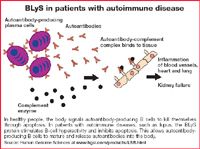A Mixed Bag: The 2007 pipeline promises novel therapeutic classes for some diseases but no new drugs in others
The 2007 pipeline promises novel therapeutic classes for some diseases but no new drugs in others

In summarizing the current state of affairs, Adamson referred to an increasing incidence of extended-spectrum beta-lactamase (ESBL)-producing bacteria, the emergence of multidrug-resistant Pseudomonas and Acinetobacter species, and the declining bacterial sensitivity to beta-lactam agents.

Blockbusters on horizon?

Among the predicted blockbusters for 2007 are two oral agents from a new class of drugs being developed for Type 2 diabetes. Both Galvus (vildagliptin; Novartis), currently under Food & Drug Administration review, and Januvia (sitagliptin phosphate, Merck), just approved, are dipeptidyl peptidase (DPP)-4 inhibitors that appear to increase levels of incretin hormones, which help regulate glucose by affecting the beta cells and alpha cells in the pancreas. Through DPP-4 inhibition, these agents generally act only when blood glucose levels are elevated to address diminished insulin production (due to beta-cell dysfunction) and uncontrolled hepatic glucose production (due to alpha-and beta-cell dysfunction).
"Most of the treatments that we use today focus primarily on stimulating insulin secretion or lowering resistance," noted Vivian Fonseca, M.D., professor of medicine and pharmacology and chief of endocrinology and metabolism at Tulane University Health Sciences Center in New Orleans. "The positive clinical results we've seen to date with vildagliptin underscore the importance and promise of addressing the dysfunction of both the pancreatic beta and alpha cells." Both drugs are suitable for once-daily dosing and have not been associated with weight gain.